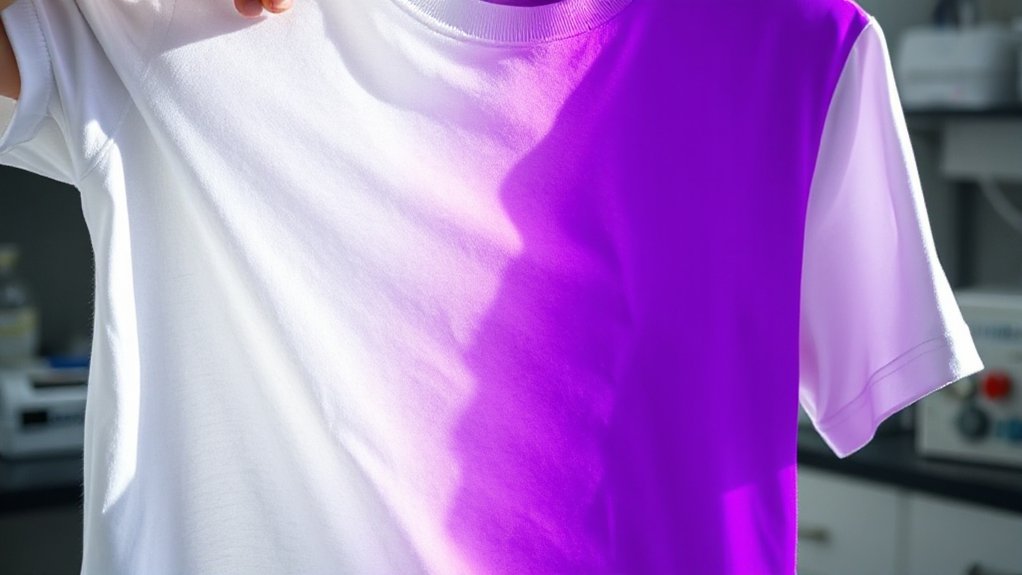A breakthrough in material science has arrived. Scientists have developed fiber technology that turns everyday fabrics into UV detection systems. No kidding. Your t-shirt might soon tell you when you’re getting sunburned.
The innovation centers on 3D printed hydrogel optical fibers with photochromic dyes. These aren’t your grandmother’s fibers. When UV light hits them, they change color—dramatically altering their reflection and transmittance spectra at specific wavelengths: 560 nm, 620 nm, and 590 nm. Pretty neat trick for a piece of fabric.
Conventional UV detection usually relies on clunky surface plasmon resonance or scintillating materials. Boring and impractical for daily use. These new hydrogel fibers? Flexible, sensitive, and capable of real-time monitoring. They actually work when you need them. These fibers could effectively complement the solar-blind UV detectors currently being developed for military and civilian applications.
The magic happens when photochromic dyes—pink, blue, or combinations—change their absorption characteristics after UV exposure. These fibers are manufactured in lengths of 1, 2, and 3 cm using PEGDA and HEMA as primary raw materials. Some researchers have gone a different route, incorporating hackmanite micro-particles directly into cellulose fibers. Same goal, different approach.
The real wizardry lies in photochromic transformation—whether through colored dyes or hackmanite particles embedded in cellulose. Different paths to the same UV-detecting destination.
What’s truly impressive is the performance. These fibers can accurately determine UV exposure levels through spectral shifts. And they don’t just work once. They show excellent reversible properties. Get exposed, change color, recover, repeat. Perfect for that friend who always forgets sunscreen.
Applications? Endless. Wearable UV sensors knitted into everyday clothing. Environmental monitoring. Industrial process control. Drug release analysis. They’re even looking at integrating them with smart devices. Your phone telling you to put on a hat? Coming soon. Unlike fossil fuels, these fiber-based technologies align with sustainable energy principles by having minimal environmental impact.
The advantages over traditional sensors are significant. Greater flexibility. More precision. Real-time detection without invasive procedures. And unlike other options, these fiber sensors are sustainable and mechanically strong enough to be practical.
The technology isn’t just clever—it’s necessary. With increasing concerns about UV exposure, having detection literally woven into the fabric of daily life could be a game-changer. Sometimes the best innovations are the ones you wear.
References
- https://www.nature.com/articles/s41598-024-69872-9
- https://pmc.ncbi.nlm.nih.gov/articles/PMC10966569/
- https://pubs.acs.org/doi/10.1021/acssuschemeng.1c05938
- https://dissolutiontech.com/DTresour/200311Articles/DT200311_A01.pdf
- https://www.chromatographyonline.com/view/ultraviolet-detectors-perspectives-principles-and-practices
- https://scitechdaily.com/molecular-marvels-scientists-revolutionize-uv-sensing-with-smart-technology/
- https://www.technologynetworks.com/analysis/articles/uv-vis-spectroscopy-principle-strengths-and-limitations-and-applications-349865
- https://www.spiedigitallibrary.org/conference-proceedings-of-spie/13344/1334407/Advancements-in-deep-UV-fiber-bundle-technology/10.1117/12.3041615.full





